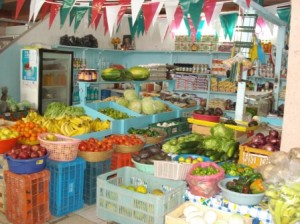Debunking the Myth: What can you REALLY do to avoid Swine Flu?
Swine flu is putting a huge dent in school attendance records and keeping people home from work. Those who haven’t gotten the H1N1 virus yet are doing whatever they can to avoid being the next victim, but unfortunately, many of the suggestions about staying healthy are untested and sometimes untrue.
Saltwater swabs of nasal and oral cavities might feel good and increase breathing capability, but representatives from the Centers for Disease Control and Prevention and Mayo Clinic claim they aren’t likely to prevent viral infections. Similarly, drinking hot beverages soothes sore throats and offers hydration, but hot liquids won’t wash the virus into your stomach to be destroyed. Mouthwash isn’t able to provide protection either.
“H1N1 lives mostly in the nasal area, so there is no way to gargle or wash it out,” says CDC spokeswoman Amanda Aldridge.
Dr. William Marshall, an infectious disease specialist at Mayo Clinic in Rochester, Minn., agrees. He says the influenza virus is borne on droplets that are spread during coughs, sneezes and conversation. These can be transferred to the eyes, nose and mouth directly or by hands that have touched contaminated surfaces where a virus can survive up to 48 hours. As soon as the virus comes into contact with the mucous membranes, it is quickly absorbed directly into the body’s cells.
Researchers are testing the ability of green tea to inhibit influenza virus replication. The outlook is good, but so far no large-scale tests have been performed that would prove its effectiveness. The same is true of garlic, apple juice and cranberry juice.
“None of those things hurt if they make people feel better, but they are unlikely to increase chances that they will or won’t get influenza,” explains Marshall.
According to him, the best way to prevent an H1N1 infection is by being vaccinated against it. Go to www.flu.gov to find vaccination availability in your area.
Some people have sought out infection at “swine flu parties” in order to build immunity to H1N1, but the CDC recommends against this potentially dangerous practice.
After vaccination, the best defense against infection is hand washing with warm water and soap. This does not destroy a virus but removes it from the hands, thus preventing easy transfer to the eyes, nose and mouth. There is no need for a special antiseptic soap since the purpose of washing is simply to send the virus down the drain. Any soap will work to break down the grease and grime that hide lurking viruses, and using it will add to the amount of time spent at the sink. Wash for at least 20 seconds, being sure to scrub fingernails and between fingers thoroughly. Sing the whole alphabet song, and don’t rinse until “you sing with me.” Then dry with a paper towel; reusable cloth towels can be havens for viruses.
“We recommend soap and water,” says Aldridge, “but an alcohol-based hand sanitizer is a good alternative.”
According to Marshall, most are alcohol-based antiseptics that denature proteins. They work against a wide range of microorganisms like bacteria and viruses but need to have a minimum of 60 percent alcohol to be successful.
Some hand sanitizers contain triclosan instead of alcohol, but the CDC says that the health effects of this compound are unknown and that more research is needed to determine if it adversely affects human health. Aldridge says she has been told that avoiding triclosan might be a good idea until studies prove whether its antibacterial properties lead to antibiotic resistance.
Aside from good hygiene, use general courtesy and healthy habits to prevent the H1N1 virus from spreading. Cough into the elbow or a tissue that can be thrown away, and head to the sink for another wash. Stay away from crowded places and sick people. Don’t “hug” soiled linens if they have been used by someone who has the flu, and wipe household surfaces with antiseptic cleansers. If you are entertaining, consider plating food individually instead of offering a buffet, and set appetizers out in decorative cupcake papers so that people have individual servings and avoid sharing food touched by contaminated hands.
“Follow general measures to remain healthy,” advises Marshall. “Don’t smoke, maintain a good body weight, get exercise, get plenty of sleep, have a healthy diet with appropriate amounts of vitamin D and C – those standard things seem to make a difference.”
# # #






























